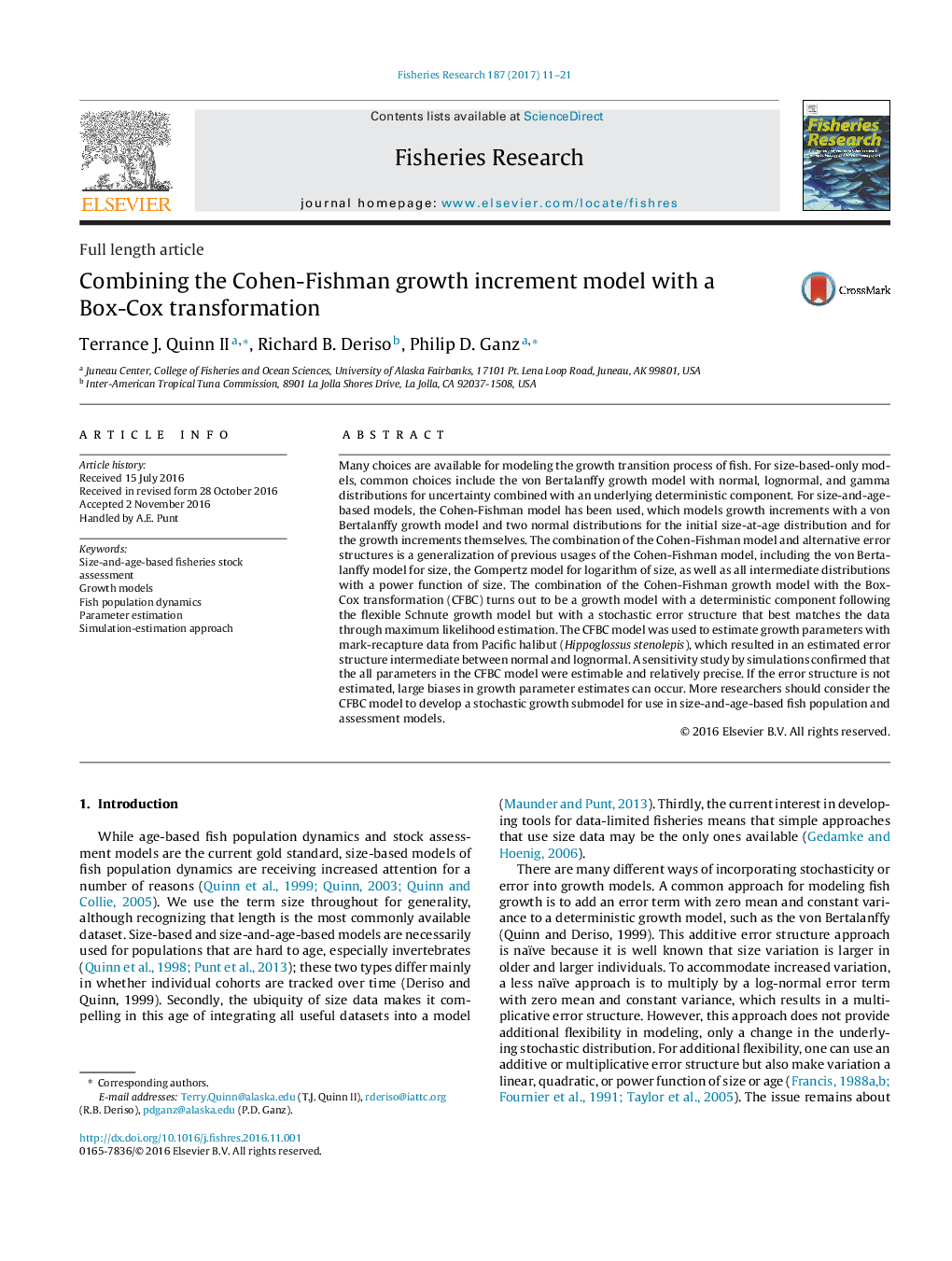| Article ID | Journal | Published Year | Pages | File Type |
|---|---|---|---|---|
| 5765638 | Fisheries Research | 2017 | 11 Pages |
Abstract
Many choices are available for modeling the growth transition process of fish. For size-based-only models, common choices include the von Bertalanffy growth model with normal, lognormal, and gamma distributions for uncertainty combined with an underlying deterministic component. For size-and-age-based models, the Cohen-Fishman model has been used, which models growth increments with a von Bertalanffy growth model and two normal distributions for the initial size-at-age distribution and for the growth increments themselves. The combination of the Cohen-Fishman model and alternative error structures is a generalization of previous usages of the Cohen-Fishman model, including the von Bertalanffy model for size, the Gompertz model for logarithm of size, as well as all intermediate distributions with a power function of size. The combination of the Cohen-Fishman growth model with the Box-Cox transformation (CFBC) turns out to be a growth model with a deterministic component following the flexible Schnute growth model but with a stochastic error structure that best matches the data through maximum likelihood estimation. The CFBC model was used to estimate growth parameters with mark-recapture data from Pacific halibut (Hippoglossus stenolepis), which resulted in an estimated error structure intermediate between normal and lognormal. A sensitivity study by simulations confirmed that the all parameters in the CFBC model were estimable and relatively precise. If the error structure is not estimated, large biases in growth parameter estimates can occur. More researchers should consider the CFBC model to develop a stochastic growth submodel for use in size-and-age-based fish population and assessment models.
Related Topics
Life Sciences
Agricultural and Biological Sciences
Aquatic Science
Authors
Terrance J. II, Richard B. Deriso, Philip D. Ganz,
